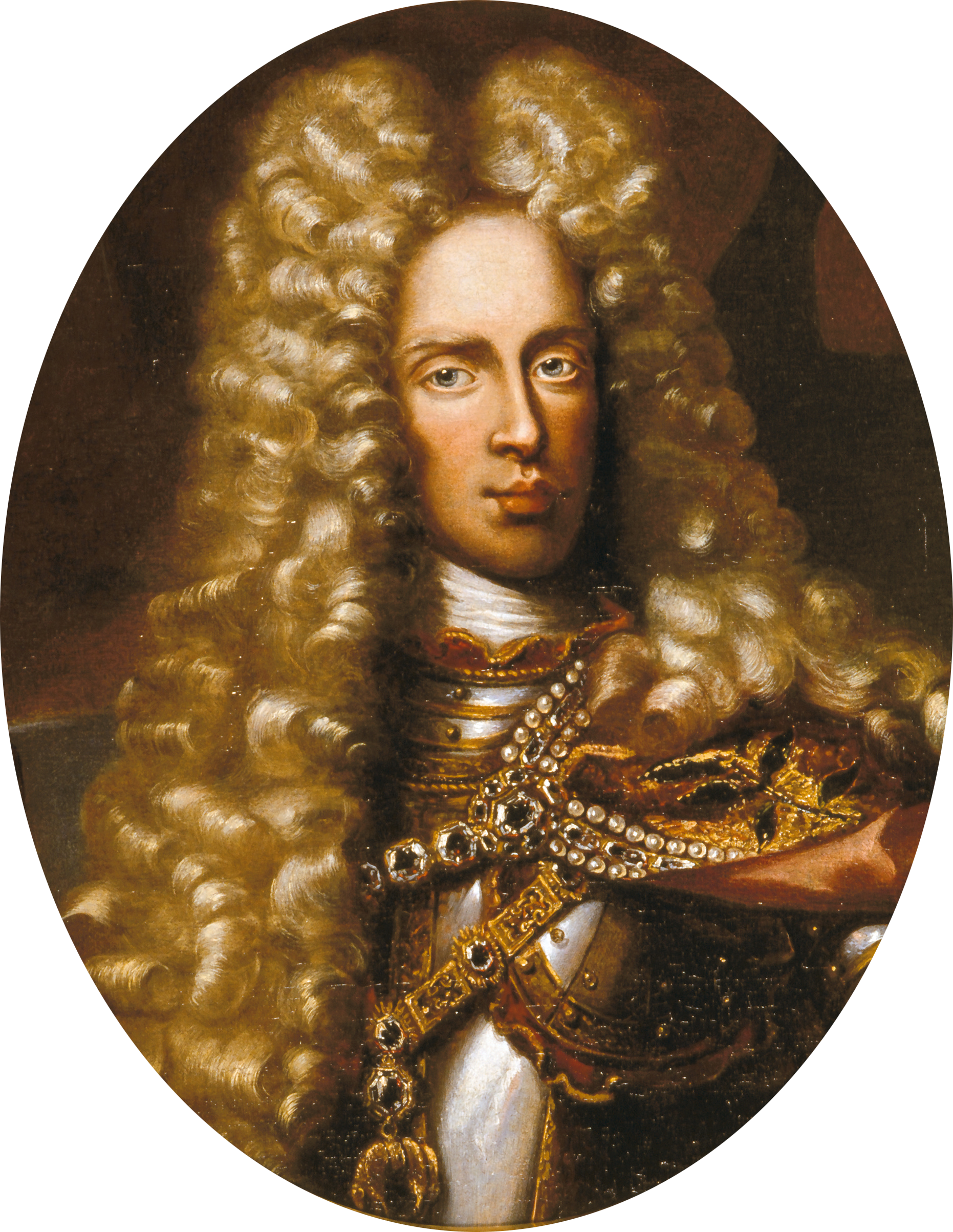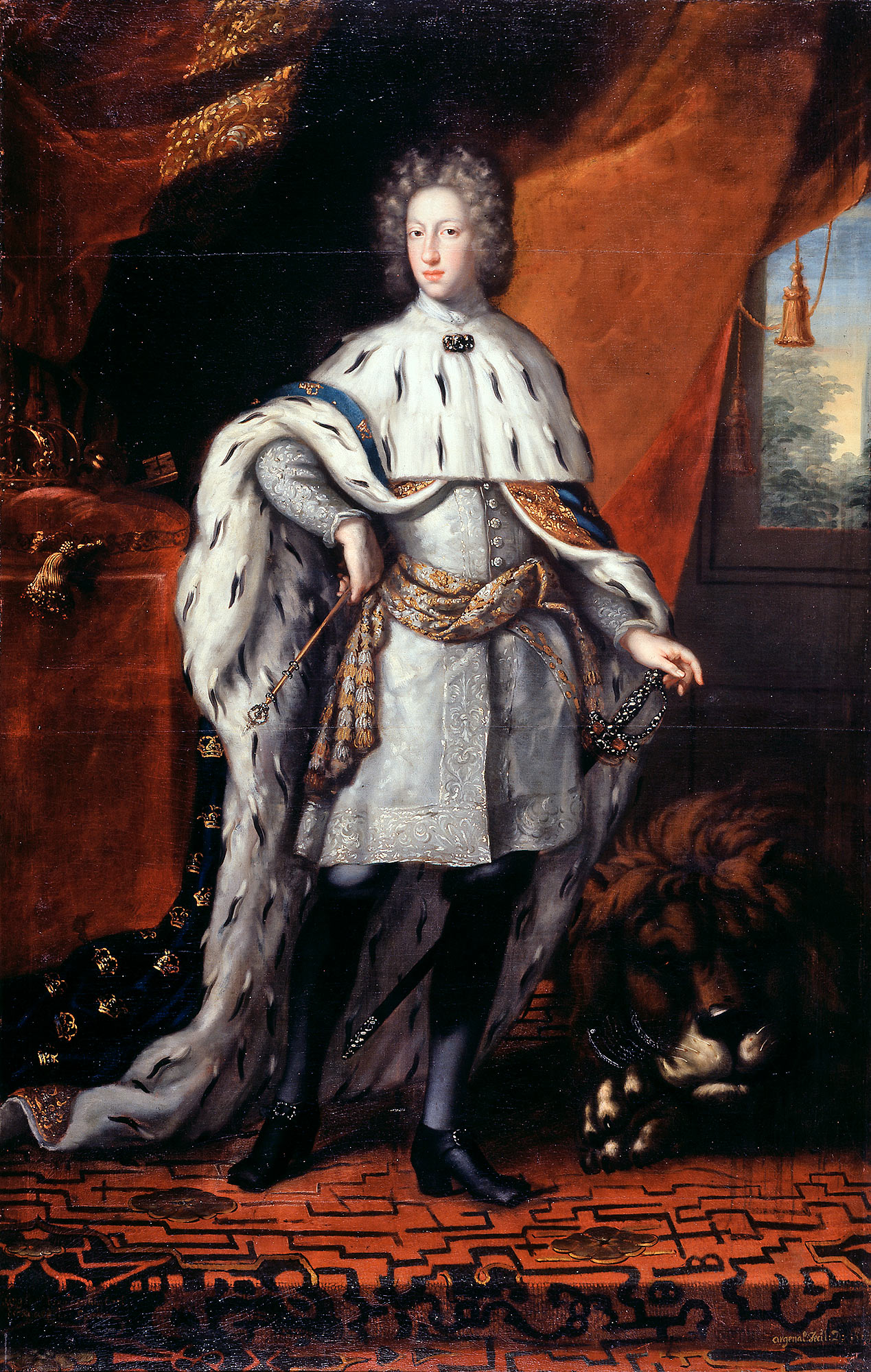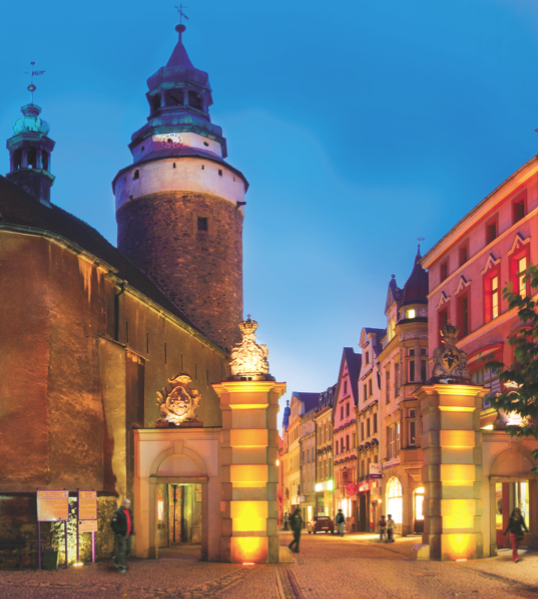|
Treaty Of Altranstädt (1707)
The Treaty or Convention of Altranstädt was signed between Charles XII of Sweden and Joseph I, Holy Roman Emperor on 31 August 1707. It settled the rights of Protestants in Silesia. Historical context While the Protestant Reformation had strongly affected Silesia, the House of Habsburg, Habsburg emperors had subjected the province to the Counter-Reformation in the 18th century.Büsch (1992), p. 575 In Upper Silesia, in particular, these measures were successful: in the early 18th century, almost half of the Silesian population was Roman Catholic Church, Roman Catholic and some 1,000 churches had been rededicated from Protestant to Roman Catholic. The Peace of Westphalia (1648) protected Protestants only in the duchies of Duchy of Brzeg, Brieg, Duchy of Legnica, Liegnitz, Duchy of Münsterberg, Münsterberg, Duchy of Oels, Öls, Wołów, Wohlau and in the city of Breslau. In the duchies of Duchy of Jawor, Jauer, Duchy of Głogów, Glogau and Świdnica, Schweidnitz, the Protestants ... [...More Info...] [...Related Items...] OR: [Wikipedia] [Google] [Baidu] |
Charles XII Of Sweden
Charles XII, sometimes Carl XII () or Carolus Rex (17 June 1682 – 30 November 1718 Old Style and New Style dates, O.S.), was King of Sweden from 1697 to 1718. He belonged to the House of Palatinate-Zweibrücken, a branch line of the House of Wittelsbach. Charles was the only surviving son of Charles XI of Sweden, Charles XI and Ulrika Eleonora the Elder. He assumed power, after a seven-month caretaker government, at the age of fifteen. In 1700, a triple alliance of Denmark–Norway, Electorate of Saxony, Saxony–Polish–Lithuanian Commonwealth, Poland–Lithuania and Tsardom of Russia, Russia launched a threefold attack on the Swedish protectorate of Holstein-Gottorp and provinces of Swedish Livonia, Livonia and Swedish Ingria, Ingria, aiming to take advantage of the Swedish Empire being unaligned and ruled by a young and inexperienced king, thus initiating the Great Northern War. Leading the Swedish army against the alliance, Charles won multiple victories despite being si ... [...More Info...] [...Related Items...] OR: [Wikipedia] [Google] [Baidu] |
Militsch
Milicz () is a town in Lower Silesian Voivodeship, in west-central Poland. It is the seat of Milicz County and of Gmina Milicz, part of the larger Wrocław metropolitan area. Geography The town is situated in the historic Lower Silesia region, near the border with Greater Poland. The centre is located on the Barycz river, about north of the regional capital Wrocław. From 1975 to 1998 Milicz belonged to Wrocław Voivodeship. The Milicz Ponds, an important habitat and breeding ground for water birds, are a nature reserve established 1963 and protected under the Ramsar convention. Since 1996 they also formed part of a larger protected area known as the Barycz Valley Landscape Park. As of 2019, the town has a population of 11,304. History Milicz developed as route of the ancient Amber Trade Route known as the Amber Road. A settlement at the site was possibly established in the 11th century. ''Milich'' Castle was first mentioned in an 1136 deed by Pope Innocent II as a pro ... [...More Info...] [...Related Items...] OR: [Wikipedia] [Google] [Baidu] |
Jelenia Góra
Jelenia Góra (; ; ) is a historic city in southwestern Poland, within the historical region of Lower Silesia. Jelenia Góra is situated in the Lower Silesian Voivodeship, close to the Karkonosze mountain range running along the Polish-Czech border – ski resorts such as Karpacz and Szklarska Poręba are situated from the city. Jelenia Góra constitutes a separate urban gmina as well as being the seat of surrounding Karkonosze County (formerly Jelenia Góra County). In 2021 the population of Jelenia Góra was 77,366. The area, including the oldest spa district of Cieplice Śląskie-Zdrój, is one of the most valued recreational and leisure spots in Poland. The city's history dates back to as early as the 10th century, but the settlement was granted town rights under Polish rule in 1288. Jelenia Góra was founded on important trade routes linking the Holy Roman Empire and Bohemia with Eastern Europe. The region flourished as a result of trade privileges that became the ba ... [...More Info...] [...Related Items...] OR: [Wikipedia] [Google] [Baidu] |
Kożuchów
Kożuchów (; ) is a town in Lubusz Voivodeship, Poland. History The town was founded in the 12th century, when it was part of the Kingdom of Poland. It was granted town rights in 1273 in the process of Ostsiedlung. As a result of the fragmentation of Poland, it became part of the Duchy of Głogów, ruled by the Piasts and Jagiellons until its dissolution in 1506. While it was still a part of Austrian Silesia, the town became highly significant to German literature during the Baroque era. During the Thirty Years War in 1632, war poet Andreas Gryphius witnessed the pillaging and burning of Freystadt by the Protestant army of King Gustavus Adolphus of Sweden. Gryphius immortalized the sack of the city in a detailed account entitled ''Fewrige Freystadt'', which made him many enemies. In the Silesian Wars of the 18th century the town was annexed by Frederick the Great to the Kingdom of Prussia and, from 1871, was part of the German Empire. Three annual fairs were held in the to ... [...More Info...] [...Related Items...] OR: [Wikipedia] [Google] [Baidu] |
Leipzig
Leipzig (, ; ; Upper Saxon: ; ) is the most populous city in the States of Germany, German state of Saxony. The city has a population of 628,718 inhabitants as of 2023. It is the List of cities in Germany by population, eighth-largest city in Germany and is part of the Central German Metropolitan Region. The name of the city is usually interpreted as a Slavic term meaning ''place of linden trees'', in line with many other Slavic placenames in the region. Leipzig is located about southwest of Berlin, in the southernmost part of the North German Plain (the Leipzig Bay), at the confluence of the White Elster and its tributaries Pleiße and Parthe. The Leipzig Riverside Forest, Europe's largest intra-city riparian forest, has developed along these rivers. Leipzig is at the centre of Neuseenland (''new lake district''). This district has Bodies of water in Leipzig, several artificial lakes created from former lignite Open-pit_mining, open-pit mines. Leipzig has been a trade city s ... [...More Info...] [...Related Items...] OR: [Wikipedia] [Google] [Baidu] |
Joseph I Holy Roman Emperor
Joseph is a common male name, derived from the Hebrew (). "Joseph" is used, along with " Josef", mostly in English, French and partially German languages. This spelling is also found as a variant in the languages of the modern-day Nordic countries. In Portuguese and Spanish, the name is "José". In Arabic, including in the Quran, the name is spelled , . In Kurdish (''Kurdî''), the name is , Persian, the name is , and in Turkish it is . In Pashto the name is spelled ''Esaf'' (ايسپ) and in Malayalam it is spelled ''Ousep'' (ഔസേപ്പ്). In Tamil, it is spelled as ''Yosepu'' (யோசேப்பு). The name has enjoyed significant popularity in its many forms in numerous countries, and ''Joseph'' was one of the two names, along with ''Robert'', to have remained in the top 10 boys' names list in the US from 1925 to 1972. It is especially common in contemporary Israel, as either "Yossi" or "Yossef", and in Italy, where the name "Giuseppe" was the most common m ... [...More Info...] [...Related Items...] OR: [Wikipedia] [Google] [Baidu] |
Treaty Of Altranstädt (1706)
The Treaty of Altranstädt was concluded between Charles XII of Sweden and Augustus the Strong of Saxony and Poland–Lithuania, on 13 October 1706, during the Great Northern War. Augustus had to renounce his claims to the Polish throne and his alliance with Russia. Background On behalf of Charles XII, who had occupied much of the Polish–Lithuanian Commonwealth during the Great Northern War, Stanisław Leszczyński was crowned king of Poland on 4 October 1705.Bromley (1970), p. 699 A faction of the commonwealth, organized in the Sandomierz Confederation, remained loyal to Saxon elector Augustus the Strong, Polish king since 1697 and allied against Charles XII with Russian tsar Peter the Great.Anisimov (1993), pp. 103-104 The resulting civil war in Poland (1704-1706) did not go well for August. His attempt to regain control in Poland–Lithuania was thwarted by Charles XII in the Battle of Grodno and by Carl Gustav Rehnskiöld in the Battle of Fraustadt, both in t ... [...More Info...] [...Related Items...] OR: [Wikipedia] [Google] [Baidu] |
August The Strong
Augustus II the Strong (12 May 1670 – 1 February 1733), was Elector of Saxony from 1694 as well as King of Poland and Grand Duke of Lithuania from 1697 to 1706 and from 1709 until his death in 1733. He belonged to the Albertine branch of the House of Wettin. Augustus' great physical strength earned him the nicknames "the Strong", "the Saxon Hercules" and "Iron-Hand". He liked to show that he lived up to his name by breaking horseshoes with his bare hands and engaging in fox tossing by holding the end of his sling with just one finger while two of the strongest men in his court held the other end.Sacheverell Sitwell. ''The Hunters and the Hunted'', p. 60. Macmillan, 1947. He is also notable for fathering a very large number of children, with contemporary sources claiming a total of between 360 and 380. In order to be elected king of the Polish–Lithuanian Commonwealth, Augustus converted to Roman Catholicism. As a Catholic, he received the Order of the Golden Fleece from the ... [...More Info...] [...Related Items...] OR: [Wikipedia] [Google] [Baidu] |
Swedish Invasion Of Saxony
The Swedish invasion of Saxony took place in 1706 during the Great Northern War, which began in 1700 when Russia, Denmark–Norway, and Saxony attacked Sweden or its ally, Holstein-Gottorp. To force Augustus II the Strong out of the war, who was the elector of Saxony and king in the Polish–Lithuanian Commonwealth, Charles XII of Sweden invaded the Commonwealth; Augustus was dethroned in 1704, and, after a devastating Saxon defeat at Fraustadt, Charles XII marched against Saxony in 1706 with 20,000 men. The supreme commander, Johann Matthias von der Schulenburg, deployed the best of his 16,000 Saxon troops in Lower Lusatia. Charles XII, however, surprised his foe and marched through Silesia into Upper Lusatia on 6 September. Schulenburg withdrew as a result. Augustus, with no hope of victory, began suing for peace. Meanwhile, Charles XII marched into Saxony and bypassed the strongly fortified Dresden, capturing Leipzig on 19 September. Several smaller engagements were fought, ... [...More Info...] [...Related Items...] OR: [Wikipedia] [Google] [Baidu] |
Great Northern War
In the Great Northern War (1700–1721) a coalition led by the Tsardom of Russia successfully contested the supremacy of the Swedish Empire in Northern Europe, Northern, Central Europe, Central and Eastern Europe. The initial leaders of the anti-Swedish alliance were Peter the Great, Peter I of Russia, Frederick IV of Denmark, Frederick IV of Denmark–Norway and Augustus II the Strong of Electorate of Saxony, Saxony–Polish–Lithuanian Commonwealth, Poland–Lithuania. Frederick IV and Augustus II were defeated by Sweden, under Charles XII, and forced out of the alliance in 1700 and 1706 respectively, but rejoined it in 1709 after the defeat of Charles XII at the Battle of Poltava. George I of Great Britain and the Electorate of Hanover joined the coalition in 1714 for Hanover and in 1717 for Britain, and Frederick William I of Prussia, Frederick William I of Brandenburg-Prussia joined it in 1715. Charles XII led the Swedish army. Swedish allies included Holstein-Gottorp, sev ... [...More Info...] [...Related Items...] OR: [Wikipedia] [Google] [Baidu] |





